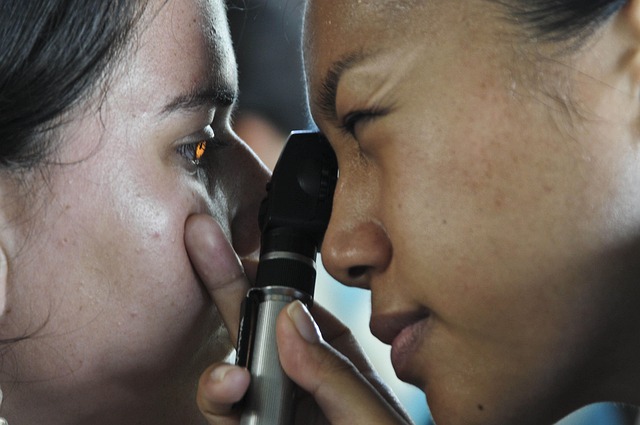Understanding Treatment Options for Blurred Vision
Retinal vein occlusion can affect vision and daily activities. Understanding available approaches, possible care options, and discussing concerns with an eye care professional can help individuals make informed choices for managing eye health and supporting overall visual comfort.

Retinal vein occlusion is one of the leading causes of vision loss among adults, particularly those over 50. When blood flow becomes obstructed in the veins of the retina, it can cause fluid buildup, swelling, and bleeding that directly affect visual clarity. The result is often blurred or distorted vision that can worsen without proper intervention. Early detection and appropriate treatment are critical to preventing permanent damage and preserving sight.
What Causes Blurred Vision from Retinal Vein Occlusion?
Retinal vein occlusion occurs when a blood clot or other blockage prevents proper circulation within the retinal veins. This disruption leads to increased pressure, causing fluid and blood to leak into the retina. The macula, which is responsible for sharp central vision, often becomes swollen in a condition known as macular edema. Risk factors include high blood pressure, diabetes, glaucoma, and cardiovascular disease. Age is also a significant factor, as the condition becomes more common after 50. Understanding these underlying causes helps healthcare professionals tailor treatment plans to address both the symptoms and the root issues contributing to the blockage.
How Does Vision Improvement for Retinal Vein Occlusion Work?
Vision improvement strategies for retinal vein occlusion focus on reducing swelling, preventing further damage, and restoring blood flow where possible. The primary goal is to manage macular edema and minimize complications that could lead to permanent vision loss. Treatment approaches vary depending on the severity and type of occlusion, whether it affects the central retinal vein or a branch vein. Anti-VEGF injections are commonly used to reduce abnormal blood vessel growth and decrease fluid leakage. Laser therapy may also be employed to seal leaking blood vessels and prevent new ones from forming. In some cases, corticosteroid implants are used to reduce inflammation and swelling over an extended period. Regular monitoring through comprehensive eye exams ensures that treatment remains effective and adjustments can be made as needed.
What Are the Main Medications for Retinal Vein Occlusion?
Several medications have proven effective in treating retinal vein occlusion and improving visual outcomes. Anti-VEGF drugs, such as ranibizumab, aflibercept, and bevacizumab, are administered through intravitreal injections directly into the eye. These medications block vascular endothelial growth factor, a protein that promotes abnormal blood vessel growth and increases vascular permeability. By inhibiting VEGF, these drugs reduce macular edema and help stabilize or improve vision. Corticosteroids, including dexamethasone and fluocinolone implants, offer an alternative or complementary approach by reducing inflammation and preventing fluid accumulation. The choice of medication depends on individual patient factors, including the severity of the condition, previous treatment responses, and overall health status. Treatment typically requires multiple injections over several months, with ongoing assessment to determine the optimal frequency and duration.
Treatment Costs and Provider Comparisons
The cost of treating retinal vein occlusion varies depending on the type of medication, frequency of injections, and healthcare provider. Understanding these financial considerations helps patients plan for ongoing care and explore available options.
| Treatment Type | Typical Cost per Injection | Frequency | Annual Estimate |
|---|---|---|---|
| Anti-VEGF Injections (Ranibizumab) | $1,800 - $2,000 | Monthly initially, then as needed | $10,000 - $15,000 |
| Anti-VEGF Injections (Aflibercept) | $1,850 - $2,100 | Every 6-8 weeks | $12,000 - $16,000 |
| Dexamethasone Implant | $3,500 - $5,000 | Every 3-6 months | $7,000 - $10,000 |
| Laser Photocoagulation | $1,500 - $3,000 | One-time or occasional | $1,500 - $6,000 |
Prices, rates, or cost estimates mentioned in this article are based on the latest available information but may change over time. Independent research is advised before making financial decisions.
Insurance coverage significantly affects out-of-pocket costs, with Medicare and private insurers typically covering medically necessary treatments. Patients should verify coverage details and explore patient assistance programs offered by pharmaceutical manufacturers, which can help reduce medication costs for eligible individuals.
What to Expect During Treatment
Treatment for retinal vein occlusion typically involves regular visits to a retinal specialist or ophthalmologist. During intravitreal injections, the eye is numbed with anesthetic drops to minimize discomfort. The procedure itself takes only a few minutes, and patients can usually resume normal activities shortly afterward. Some may experience temporary side effects such as eye pressure, mild discomfort, or floaters, which generally resolve within a day or two. Laser therapy sessions are also relatively quick and performed on an outpatient basis. Consistent follow-up appointments are essential to monitor progress, assess vision changes, and determine whether additional treatments are needed. Many patients experience gradual vision improvement over weeks to months, though results vary based on the extent of initial damage and individual response to therapy.
Long-Term Management and Prevention
Managing retinal vein occlusion extends beyond immediate treatment to include long-term strategies for preserving vision and preventing recurrence. Controlling underlying health conditions such as hypertension, diabetes, and high cholesterol is crucial. Regular eye examinations allow for early detection of changes and timely intervention. Lifestyle modifications, including maintaining a healthy weight, exercising regularly, and avoiding smoking, support overall vascular health and reduce risk factors. Patients should remain vigilant about new symptoms, such as sudden vision changes or increased blurriness, and seek prompt medical attention when concerns arise. With appropriate treatment and ongoing care, many individuals with retinal vein occlusion can maintain functional vision and quality of life.
Conclusion
Blurred vision from retinal vein occlusion requires prompt attention and specialized treatment to prevent permanent damage. Modern medications, including anti-VEGF injections and corticosteroid implants, offer effective options for reducing swelling and improving visual outcomes. Understanding treatment costs and available providers helps patients make informed decisions about their care. While the condition presents challenges, advances in medical therapy have significantly improved prognosis and quality of life for those affected. Working closely with eye care professionals and maintaining overall health are key components of successful long-term management.
This article is for informational purposes only and should not be considered medical advice. Please consult a qualified healthcare professional for personalized guidance and treatment.



